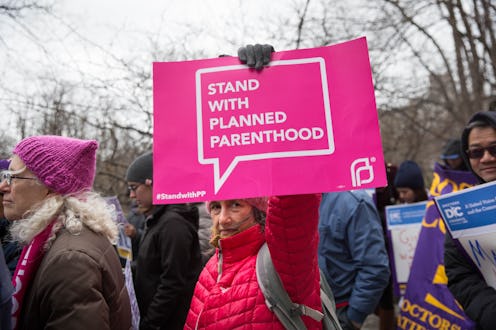News
Can States Defund Planned Parenthood Now?

On Thursday, President Trump signed a resolution that reverses the Obama administration’s rule prohibiting state and local governments from withholding Title X funding from family planning organizations that provide abortions. The move is widely seen as a strike against Planned Parenthood.
While this does not mean states can defund Planned Parenthood, (about 75 percent of its federal funding comes from Medicaid reimbursements) this does mean they can potentially withhold tens of millions of dollars, without which it would be extremely difficult for the organization to continue to operate its 650 health centers throughout the country.
The resolution, which President Trump signed behind closed doors on April 13, reverses a Health and Human Services rule enacted by President Obama in his last days in office, which required state and local governments to provide Title X funding to family planning organizations who had the “ability to deliver services to program beneficiaries in an effective manner,” regardless of whether they also provided abortions. Title X subsidizes contraception, Pap smears, and other preventative healthcare services to low-income Americans.
The resolution passed the Senate last month, after Vice President Mike Pence cast the tie-breaking vote. Republican Senators Susan Collins of Maine and Lisa Murkowski of Alaska broke with their party to oppose the measure.
“If you’re serious about trying to reduce the number of abortions, the best way to do that is to make family planning more widely available,” Senator Collins said after the vote.
The vote was a huge victory for many congressional Republicans, who have had Planned Parenthood in their crosshairs for years. In an op-ed for the conservative Washington Examiner, Senator Joni Ernst of Iowa and Congresswoman Diane Black of Tennessee wrote: “Taxpayers should not be forced to subsidize the abortion industry in this country.”
In fact, voters don’t subsidize the abortion industry. The 1976 Hyde Amendment prohibits any federal funding, such as Title X, from going to abortions (though Planned Parenthood can spend federal money through Medicaid on “abortions arising from incest, rape, or when the mother’s life is in danger").
If Planned Parenthood didn't receive these funds, who would? Many of the organizations opponents have advocated for federal funds to be redirected toward Federally Qualified Health Centers (FQHC), but some experts have suggested this isn't a realistic solution. A study by the Guttmacher Institute, a research organization focused on reproductive healthcare, found that it is unlikely that these centers would be able to fill the important role Planned Parenthood plays in communities across the country. In 2014, the Guttmacher Institute estimated that Title X grants to family planning providers, including Planned Parenthood, stopped 904,000 unintended pregnancies, 439,000 unplanned births, and 326,000 abortions.
In other words, by blocking funding to Planned Parenthood, the administration is not preventing abortions. What it's doing instead is preventing its most vulnerable citizens, specifically low-income and minority populations, from accessing basic healthcare, specifically low-income and minority populations. Title X currently subsidizes healthcare for roughly 4 million Americans, about half of whom are uninsured, and a third of whom are patients of Planned Parenthood. According to Planned Parenthood, 80% of the patients it treats with Title X-funded services have incomes below 150% of the poverty level, 21% identify as Black or African American, and 32% identify as Hispanic or Latino.
Limiting access to family planning services will also cost us. For every dollar the government invests in family planning programs like Title X, it saves $7.09 in Medicaid-related costs. In 2010 alone, state and federal government saved $7 billion from Title X-funded centers, including Planned Parenthood clinics.
While states can't completely defund Planned Parenthood right now, the administration isn’t done with them yet. In a statement following the signing on Thursday, Marjorie Dannenfelser, president of the anti-abortion organization the Susan B. Anthony List, who was in the room when Trump signed the reversal, stated: “We expect to see Congress continue its efforts to redirect additional taxpayer funding away from Planned Parenthood through pro-life healthcare reform after the spring recess.”